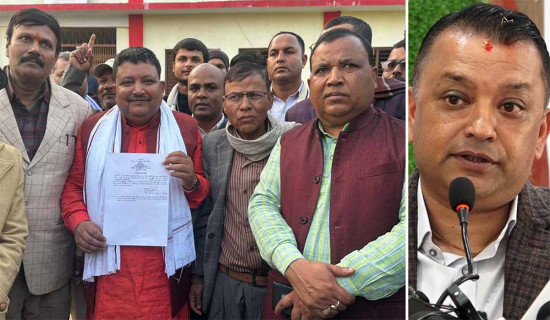- Tuesday, 20 January 2026
Tackling Disasters
One of the most overlooked and least appreciated achievements humankind has made in the past 100 years has happened in the last few decades: the advent of an early warning systems that alert the population at risk of imminent natural disaster as well as concerned emergency and rescue services before the people can run for cover or be rescued to safety. Such systems have greatly improved our ability to predict and prepare for natural disasters. The Bhola cyclone, for example, that hit Bangladesh in 1970 killed at least 300,000 people. The 2004 Indian Ocean earthquake-triggered tsunami killed some 230,000 in Indonesia, Sri Lanka, India and Thailand. But it wouldn't be an exaggeration to say that these days, such large-scale deaths and devastation have become a thing of the past.
The UN has recently acknowledged that fewer people are dying globally due to floods, cyclones, heat waves, drought, among other natural disasters, even as they are getting more intense, more frequent and striking more and more places – a phenomena attributed to climate change. Experts agree that better warning, planning and resilience have all made the difference. The sad reality, however, is that, many countries in the global south are lagging behind when it comes to soften the blow of catastrophic events. Nepal is one among such countries. That said, with the government springing into action with concrete disaster plans and measures this time, we can expect things to markedly improve.
The season of monsoon is upon us. The season sets in around June 12 and lasts until the first week of October. It is during this time natural disasters wreak havoc across the country. To stay prepared to minimise loss and damage as a result, the National Emergency Operation Centre of the Ministry of Home Affairs has established a central command post for monsoon preparedness and prompt response. The post will handle various preparation and precaution measures for the prevention, relief and rescue round the clock. In an effort to reinforce the government response, 'National Action Plan For Monsoon Preparedness and Response- 2081' is also being implemented.
The Action Plan estimates that about 1.81 million population and 412,000 households may be affected this monsoon. A total of 83,000 households may be directly affected, of which 18,000 will have to be rescued and taken care of. The command post will undertake some major tasks like effective implementation of the preparedness and response plans based on impact assessments by obtaining weather forecast information of a week, three days, and one day in advance, and immediate dissemination of information about potential risks in various languages through different communication media. What's more, it will regularly collect information on disaster events from across the country and immediately inform relevant officials from concerned agencies for prompt response.
According to a news report this daily carried on Thursday, Bagmati province is leading the rest of the provinces in taking proactive steps to deal with the anticipated monsoon-induced disaster. It has already identified the disaster-prone areas and mapped them. Installing early warning system is underway. The trailing provinces have no time to waste before monsoon makes its presence felt. There's nothing we can do about natural disasters. What we can do, however, is to minimise their impacts by staying prepared.

















